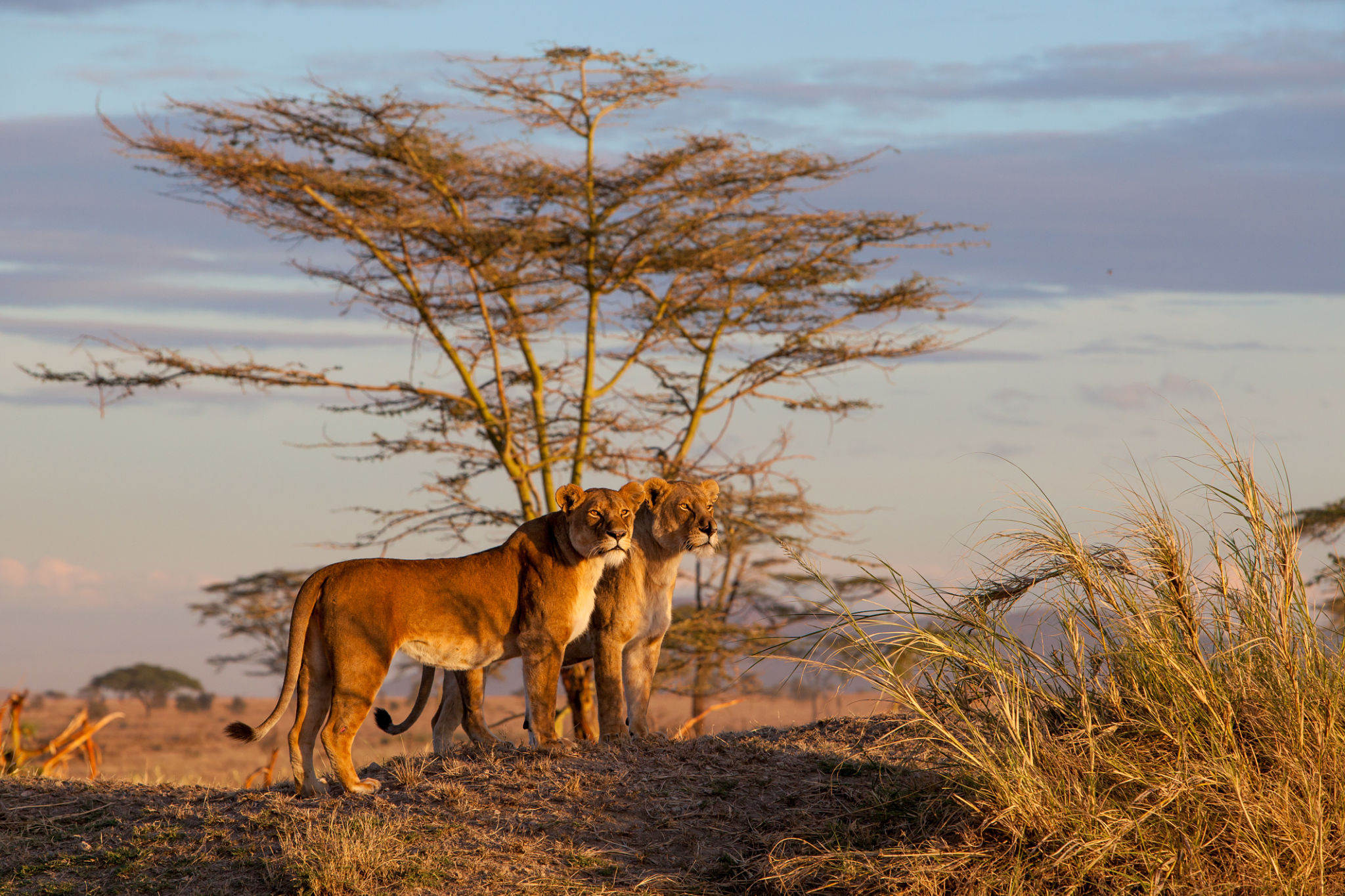Photography Safaris
Tanzania must rank among the world’s top tourist destinations for photographers. Tanzania is luxuriating in its newly-acquired status as a seriously hot photographic travel destination, boasting everything from snow-capped mountain peaks to “Big Five” safaris and dreamy tropical islands.
The list of famous Tanzanian photographic locations is virtually endless and includes the Serengeti plains, the steep-sided Ngorongoro Crater, the giant tuskers of Tarangire, the giant flamingos of Lake Manyara, idyllic Zanzibar, traditional Pemba, and the wild landscapes of Ruaha, Katavi, and Stiegler’s Gorge in the Selous. Photographers salivate at the thought of visiting this country because of the numerous mountains and volcanoes, including the world-famous Kilimanjaro and the restless Ol Doinyo Lengai volcano. The Mahale Mountains, with its habituated chimpanzees and location near Lake Tanganyika, is another uncommon photographic destination.
The best places to take pictures are either from a private vehicle or, at the very least, from a vehicle of like-minded people who won’t move during key moments and who are content to be out before dawn and coming in after dark. When you are in charge of the vehicle and where it travels, photographic safaris are typically the most successful. It makes a big difference to have a guide who is a photographer themselves and has experience leading photographers to position the vehicle correctly, catch the right light, and resist the urge to return to the lodge or camp just because it’s time for breakfast. To make sure there is no conflict of interest and that you are in control of your own photographic destiny, if you can afford it, it is definitely worth renting a private vehicle for you and your fellow photographers. Outside of parks and game reserves, where dangerous wildlife and safety are less of an issue, things are much simpler, allowing one to explore and take photos on foot and at their own pace.
Traveling with multiple camera bodies attached to various lenses is a good idea because dust can get inside the camera when changing lenses, which is a big problem on safari. Have a solar charger, extra batteries, and lots of extra memory cards. It is a fantastic piece of equipment to bring on trips (because it is difficult to try and charge batteries halfway up a volcano).
The biggest and most difficult decision you will have to make is when to go on your photo safari. On the one hand, the late dry season offers excellent wildlife viewing and Mara River crossings, but it also brings smoky and dusty conditions, as well as drab brown and grey backgrounds. The clarity after the rains is unmatched during the green season when the revived bush comes back to life, but on the other hand, wildlife is dispersed and good sightings can sometimes be more difficult to come by. The best time of year to focus on landscape and bird photography is unquestionably now.
TAILOR MADE TANZANIA SAFARI TOURS
Together, we will organize the trip of your lifetime

